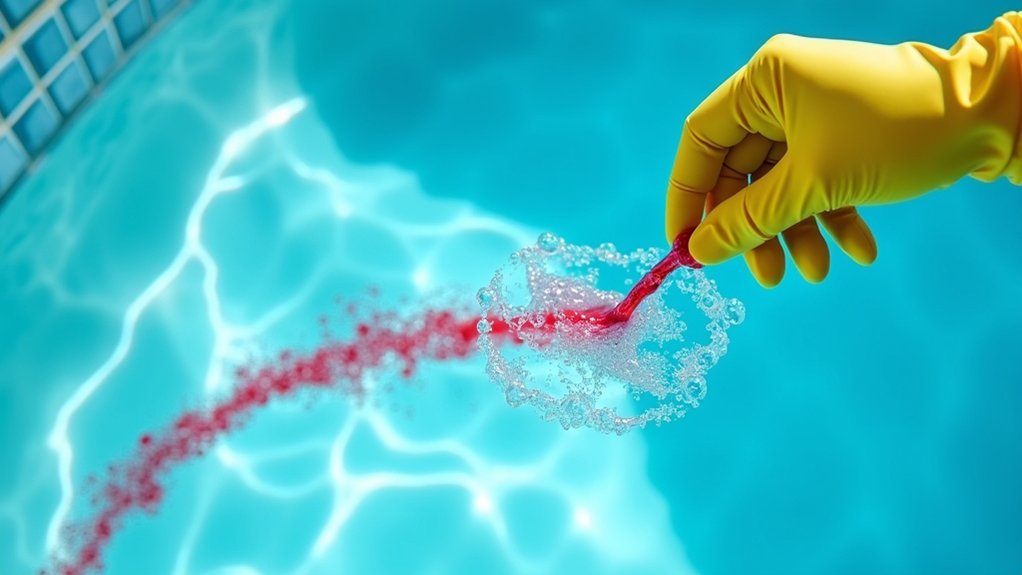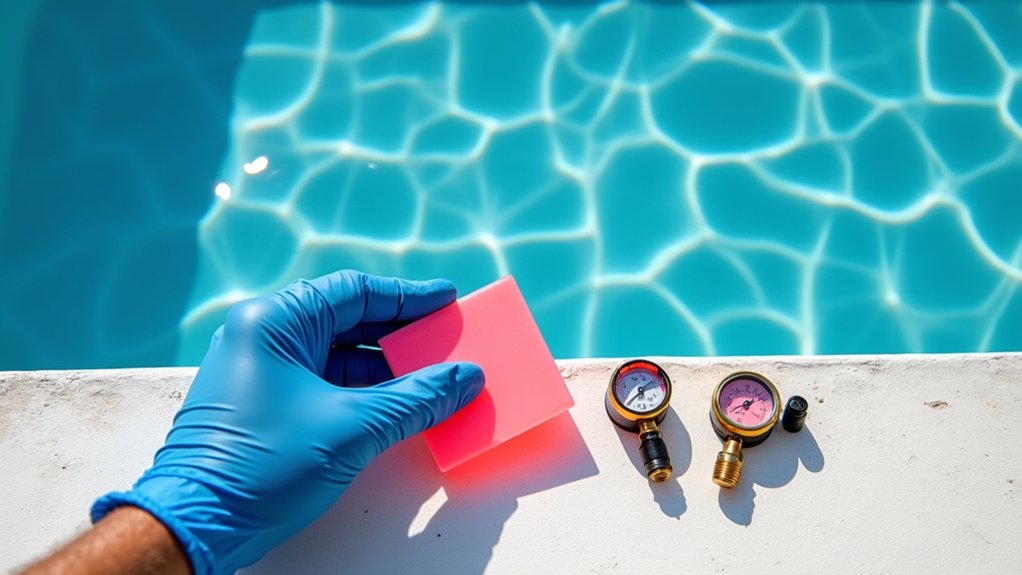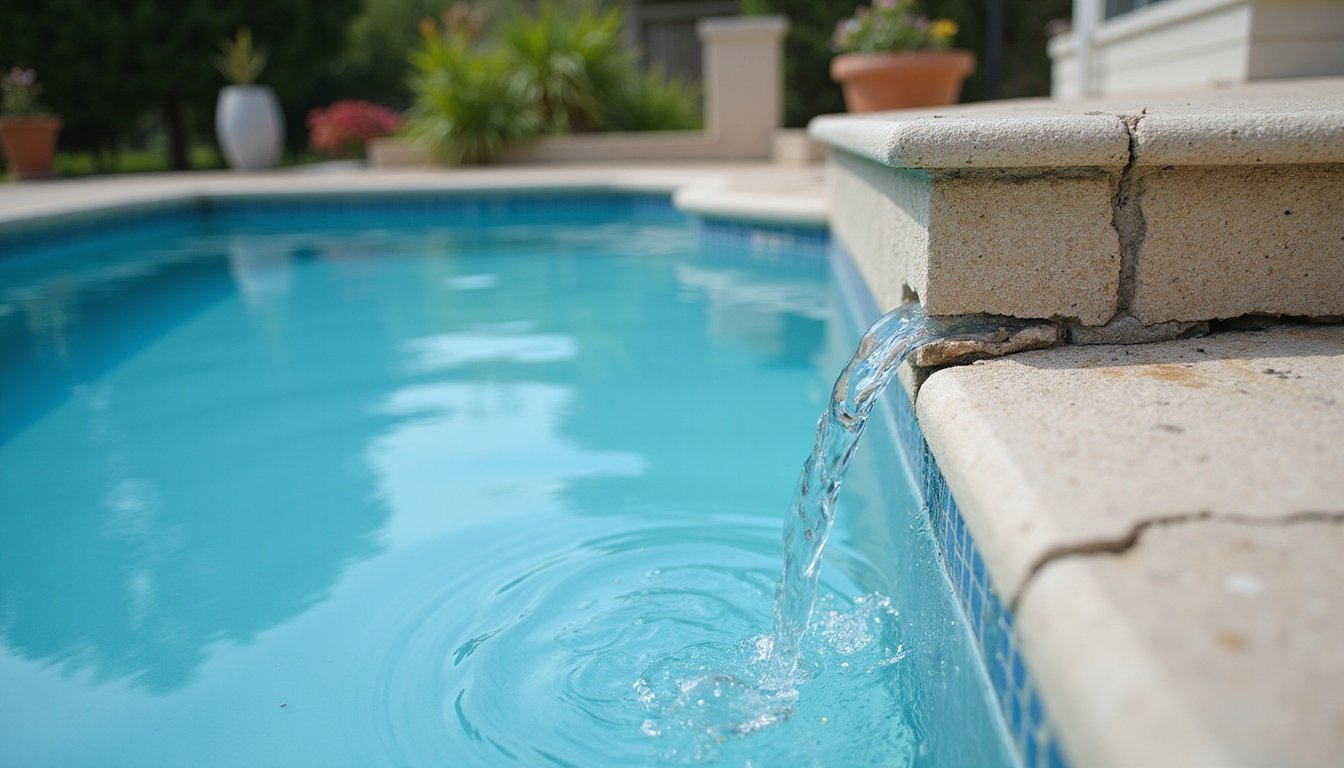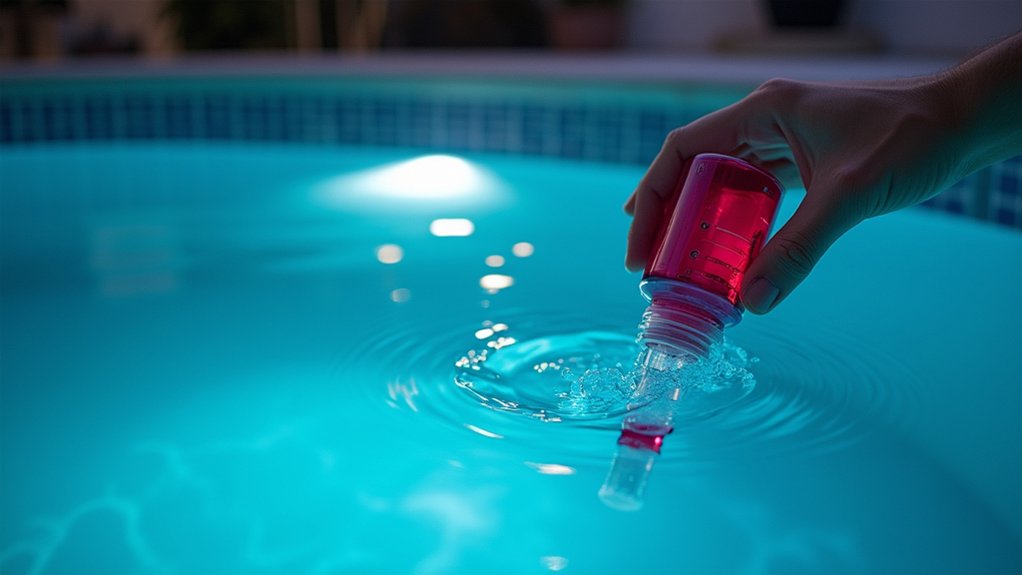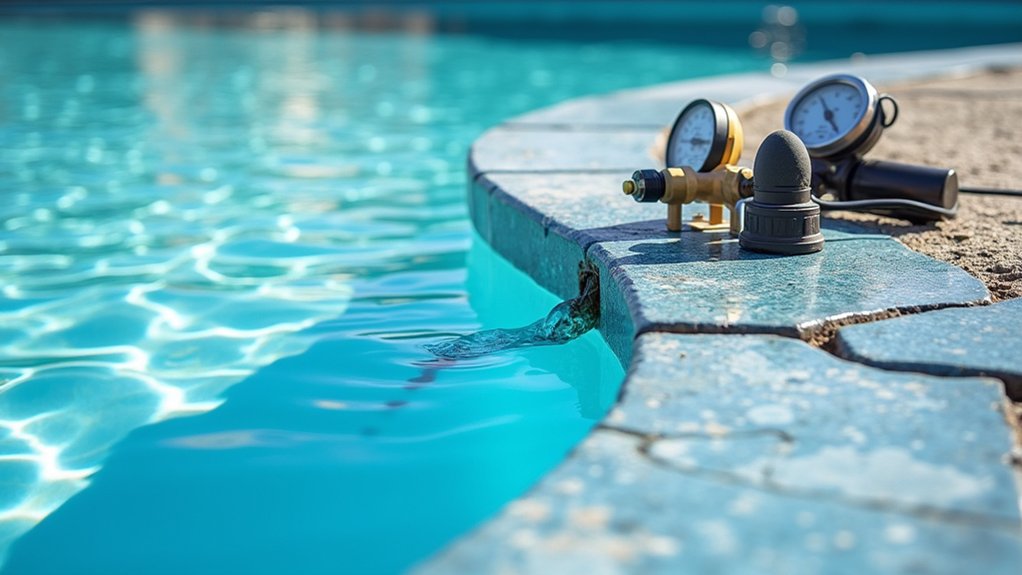While variable-speed pool pumps cost $800-1,500 versus $400-800 for single-speed units, you’ll recover the difference through substantial energy savings. Variable-speed pumps operate at adjustable RPMs (600-3,450) and consume up to 80% less electricity than single-speed models fixed at 3,450 RPM. You’ll also benefit from quieter operation (45-50 decibels vs. 75-80) and extended lifespan (8-12 years vs. 3-8 years). Understanding the full range of operational advantages will help justify the higher upfront investment.
Key Takeaways
- Variable-speed pumps consume up to 80% less electricity than single-speed pumps, resulting in significant monthly utility savings of 40-80%.
- Variable-speed pumps last 8-12 years compared to single-speed’s 3-8 years, offering better long-term value despite higher upfront costs.
- Variable-speed pumps operate at 45-50 decibels versus single-speed’s 75-80 decibels, providing much quieter operation for homeowners.
- Variable-speed pumps offer programmable speeds for different tasks, while single-speed pumps run constantly at maximum RPM.
- Variable-speed pumps require less maintenance, with inspections needed every 6-12 months versus 3-6 months for single-speed units.
How Single and Variable-Speed Pumps Actually Work
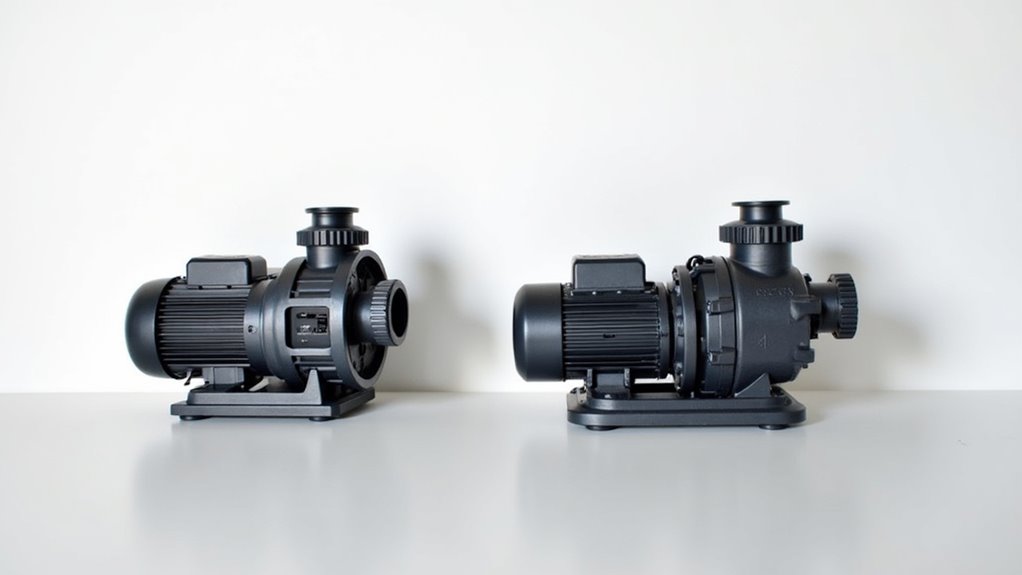
While both types serve the same fundamental purpose of circulating pool water, single and variable-speed pumps operate on distinctly different principles. Single-speed pumps run at a constant RPM, typically 3,450, using an induction motor with one set speed that you can’t adjust. The pump mechanics involve a basic on/off operation without speed variation capabilities.
Variable-speed pumps utilize advanced permanent magnet motors with digital controls, allowing you to adjust RPMs from 600 to 3,450. These operational differences mean you’ll have precise control over flow rates and energy consumption. You can program lower speeds for basic filtration and higher speeds for specific tasks like running water features or backwashing. The motor technology automatically compensates for voltage fluctuations, ensuring consistent performance while markedly reducing energy usage compared to single-speed models.
Initial Purchase and Installation Costs Compared
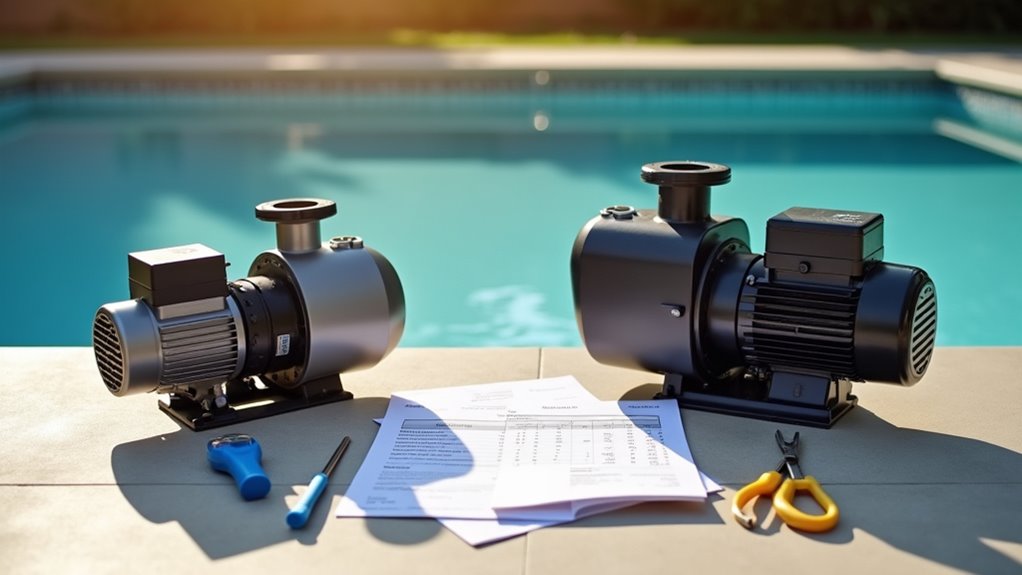
Although single-speed pumps initially cost less upfront, ranging from $400-800, variable-speed models command considerably higher prices between $800-1,500. The price gap widens further when you factor in installation fees, which typically run $200-400 for single-speed and $300-600 for variable-speed units due to their more complex wiring requirements.
Your initial expenses will also include supplementary components. Single-speed installations often need just basic plumbing connections and a timer, while variable-speed systems require advanced digital controls and potentially upgraded electrical circuits. If your existing setup can’t support a variable-speed pump’s sophisticated electronics, you’ll need to budget for electrical panel modifications. It’s essential to account for these installation-related costs when calculating your total investment in either pump type.
Energy Consumption and Operating Efficiency
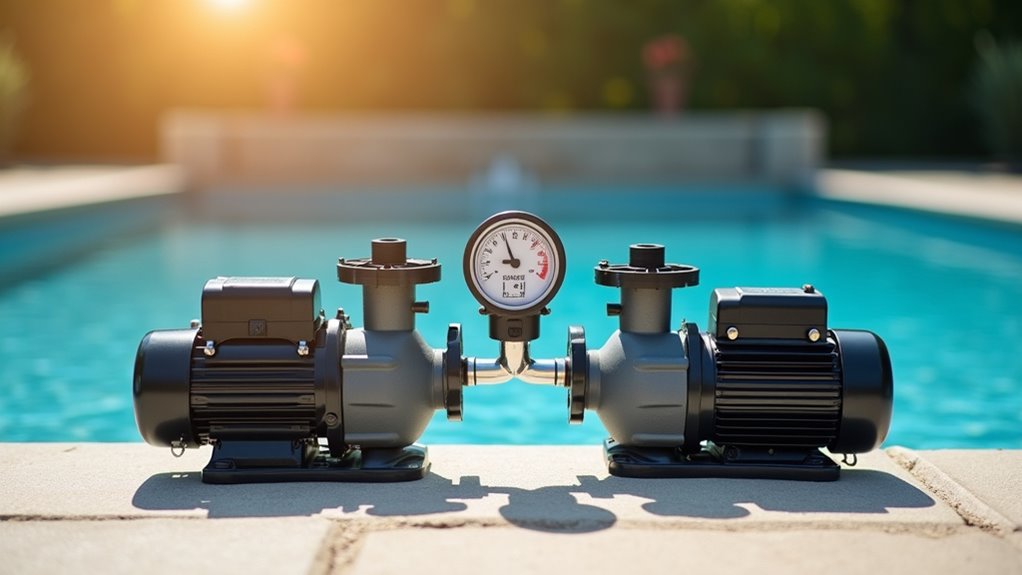
Despite their higher upfront costs, variable-speed pumps deliver superior energy efficiency by operating at lower speeds for extended periods. You’ll find that these pumps consume up to 80% less electricity compared to single-speed models when running at lower RPMs. The ability to adjust speeds allows you to match flow rates precisely to your pool’s specific needs.
Single-speed pumps operate at full power whenever they’re running, regardless of the task. This inefficiency translates to higher operational costs and wasted energy. Variable-speed units let you program different speeds for distinct functions – lower speeds for filtration and higher speeds for cleaning. Your pump can run longer at reduced speeds, improving circulation while minimizing energy consumption. The Department of Energy estimates that you’ll save hundreds annually on utility bills with a variable-speed pump.
Monthly Utility Savings Breakdown
When comparing actual monthly utility costs, you’ll see variable-speed pumps delivering significant savings across all seasons. Operating at lower speeds during off-peak hours, these pumps can reduce your monthly utility bills by 40-80% compared to single-speed models.
In summer months, when your pool requires longer running times, you’ll typically save $75-150 on monthly energy costs. Winter operations show savings of $30-60 per month due to reduced runtime requirements. These calculations assume average electricity rates of $0.12/kWh and standard pool sizes of 15,000-20,000 gallons.
Your actual monthly savings will vary based on local utility rates, pool usage patterns, and climate conditions. To enhance cost reduction, you’ll want to program your variable-speed pump to run at its lowest effective speed during non-peak hours.
Noise Levels and Neighborhood Considerations
Since pool pump noise can impact both your comfort and neighborly relations, understanding decibel ratings becomes essential for residential installations. Variable-speed pumps operate considerably quieter than single-speed models, reducing noise pollution and minimizing potential conflicts with community guidelines.
- Variable-speed pumps run at 45-50 decibels, comparable to a quiet conversation
- Single-speed pumps generate 75-80 decibels, similar to street traffic noise
- Lower RPM settings on variable-speed pumps reduce operational sound
- Sound-dampening enclosures can further minimize noise transmission
- Strategic pump placement away from property lines helps meet HOA requirements
You’ll need to reflect on your yard layout, pump location, and local noise ordinances when selecting between pump types. Variable-speed models offer superior noise control, making them ideal for densely populated neighborhoods where sound restrictions are strictly enforced.
Maintenance Requirements and Longevity
The long-term value of a pool pump extends beyond its operational noise to its maintenance demands and expected lifespan. When comparing pump options, you’ll find that variable-speed pumps generally require less frequent maintenance due to their advanced motor technology and cooler operating temperatures.
Your maintenance schedules will differ markedly between models. Single-speed pumps typically need inspection every 3-6 months, while variable-speed units can often go 6-12 months between checks. The pump lifespan also varies considerably – single-speed pumps average 3-8 years of service, whereas variable-speed pumps commonly last 8-12 years with proper care. You’ll need to monitor seals, bearings, and impellers regardless of pump type, but variable-speed units’ lower RPM operation reduces wear on these components, extending their service intervals.
Environmental Impact and Sustainability
As sustainability becomes increasingly critical in home systems, pool pumps demonstrate significant variations in their environmental footprint. The environmental benefits of variable-speed pumps are particularly notable when compared to their single-speed counterparts in sustainability practices.
- Variable-speed pumps reduce energy consumption by up to 80%, directly lowering your carbon footprint
- Advanced motor technology in variable-speed units minimizes noise pollution and electromagnetic interference
- Longer operational lifespan means fewer units end up in landfills
- Lower chemical usage due to enhanced circulation patterns reduces environmental impact
- Energy Star certified variable-speed pumps comply with strict environmental standards
These factors make variable-speed pumps the environmentally conscious choice, aligning with modern sustainability practices while maintaining peak pool performance. Your selection impacts both immediate energy consumption and long-term environmental preservation.
Programming Features and Daily Operation
Understanding how to program and operate different pool pump models can greatly impact their efficiency and performance. Variable-speed pumps offer extensive programming options that let you customize flow rates for specific tasks like filtering, heating, or running water features. You’ll be able to set multiple operation schedules throughout the day, optimizing energy usage during off-peak hours.
Single-speed pumps have limited programming capabilities, typically operating at full power whenever they’re running. You’ll need to rely on basic timers to control their on/off cycles. While this simplifies daily operation, it reduces your ability to fine-tune performance. Variable-speed models include digital interfaces with preset programs, custom speed settings, and built-in diagnostic features that help you monitor performance and energy consumption. These advanced controls enable precise adjustment of water circulation based on your pool’s specific needs.
Making the Right Choice for Your Pool Size
Selecting an appropriately sized pool pump requires careful calculation of your pool’s total water volume and desired turnover rate. Your pump’s horsepower and flow rate must align with your pool’s specific requirements to guarantee ideal performance and energy efficiency.
- For pools under 15,000 gallons, a 1-1.5 HP single or variable-speed pump typically provides sufficient flow
- Medium pools (15,000-30,000 gallons) perform best with 1.5-2 HP pumps that maintain proper circulation
- Large pools exceeding 30,000 gallons require 2-3 HP pumps to achieve adequate turnover
- Pool size and pump compatibility assessment should factor in extra water features like spas or fountains
- Your pump’s flow rate must match your filter’s specifications to prevent system strain or inadequate filtration
Consider these specifications when evaluating pump options to enhance efficiency and guarantee proper water circulation for your specific pool configuration.
Frequently Asked Questions
Can I Switch Between Single and Variable-Speed Modes on One Pump?
You can’t switch between single and variable-speed pump operation modes on one pump, as they’re fundamentally different motor designs. Single-speed pumps have fixed RPM settings, while variable-speed pumps use advanced magnetic motors with programmable speeds. These distinct technologies aren’t interchangeable within the same unit. If you’re looking to change speeds, you’ll need to invest in a dedicated variable-speed pump for ideal energy efficiency comparison and operational flexibility.
Do Variable-Speed Pumps Require Special Plumbing Modifications During Replacement?
In most cases, you won’t need special plumbing modifications for your variable-speed pump installation. Modern variable-speed pumps are designed with standard plumbing compatibility, typically fitting the same connections as your existing pump. However, you’ll want to verify that your pipe diameter matches the new pump’s inlet/outlet sizes. If you’re upgrading from a very old system, you might need adapters to accommodate different pipe sizes, but this is rarely a major concern.
What Happens to Pool Pump Performance During Extreme Weather Conditions?
During extreme weather, your pool pump’s performance can fluctuate considerably. In cold conditions, you’ll notice increased energy consumption as the pump works harder to maintain circulation and prevent freezing. When temperatures soar, the pump might experience reduced efficiency due to higher water viscosity and increased pool temperature. You’ll need to monitor your pump‘s RPM and flow rates closely, adjusting settings to compensate for these environmental changes while maintaining ideal circulation and filtration.
Are There Smartphone Apps Available to Control These High-Efficiency Pumps?
You’ll find numerous smartphone-compatible pool pump control apps available through major manufacturers. Most high-efficiency pumps now offer built-in WiFi connectivity and pump automation features. Through these apps, you can monitor energy usage, adjust flow rates, set schedules, and receive maintenance alerts remotely. Leading brands like Pentair, Hayward, and Jandy provide dedicated mobile platforms that let you control your pump’s performance from anywhere. Some apps even integrate with smart home systems for improved automation.
Can These Pumps Handle Saltwater Pool Systems Effectively?
Modern high-efficiency pumps are engineered for saltwater compatibility, but you’ll need to guarantee you’re selecting models specifically rated for salt systems. While all pumps can technically move saltwater, those with improved corrosion resistance and specialized seals will offer better pump longevity. You’ll find that most premium models feature salt-friendly components like high-grade thermoplastics and stainless steel hardware. It’s essential to verify the manufacturer’s salt-system certification before installation.
